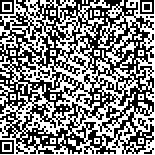| 摘要: |
| 目的 判断畜牧产业及内部行业集聚时空特征、分析集聚影响因素,对于优化畜牧产业内部各行业空间布局具有重要意义。方法 文章基于2003—2018年中国畜牧产业产值、要素投入及相关产业产值等数据,采用区位熵指数、空间自相关指数判断中国畜牧产业及内部行业集聚时空特征,利用空间杜宾模型和空间GMM从横、纵两个维度分析中国畜牧产业集聚影响因素。结果 (1)中国畜牧产业空间集聚效应在“上升—下降—上升”中呈现“高—高”“低—低”两极分化结构;“北高南低”“西强东弱”的“连片化”空间格局中呈现“梯度化”特征。(2)草食型家畜行业集聚在“北高南低”的空间格局中马太效应明显,其空间集聚效应强于耗粮型畜禽行业;耗粮型畜禽行业集聚空间分布呈由东南非沿海地区向西北递减、中部向东北和西南递增的特征。(3)中国畜牧产业集聚影响因素中劳动力投入和技术投入表现出显著的行业异质性、产业关联影响力度不足。结论 各地区应继续因地制宜促进产业规模化发展,加大技术推动、人才支持,积极延长产业链,促进畜牧产业由集聚式发展到集群式发展。 |
| 关键词: 畜牧产业 产业集聚 时空特征 行业异质性 集群式发展 |
| DOI:10.7621/cjarrp.1005-9121.20230501 |
| 分类号:F326.3 |
| 基金项目:国家社会科学基金一般项目“民族地区‘绿水青山’转化为‘金山银山’的能力评价及提升路径研究”(20BMZ104) |
|
| SPATIAL-TEMPORAL CHARACTERISTICS AND INFLUNCING FACTORS OF ANIMAL HUSBANDRY'S AGGLOMERATION IN CHINA |
|
Tao Guiren, Liang Shifu
|
|
School of Economics, South-Central Minzu University, Wuhan 430074, Hubei, China
|
| Abstract: |
| Judging the spatial-temporal characteristics of animal husbandry industry agglomeration and its internal industries and analyzing the influencing factors of agglomeration is of great significance for optimizing the spatial layout of various industries within the animal husbandry industry. Based on the output value of animal husbandry in China, factor input and output value of related industries from 2003 to 2018, the spatial-temporal characteristics of China's animal husbandry and its internal industry agglomeration were determined by using location entropy index and spatial autocorrelation index, and the influencing factors of animal husbandry's agglomeration in China were analyzed by using spatial Durbin model and spatial GMM in horizontal and vertical dimensions. The results showed that: (1) The spatial agglomeration effect of China's animal husbandry presented a "high-high" and "low-low" differentiation structure in the "upward-downward-rising" process; The "contiguous" spatial pattern of "high in the north and low in the south" and "strong in the west and weak in the east" showed the characteristics of "gradient". (2) The agglomeration of herbivorous animal husbandry was higher in the north and lower in the south, and the agglomeration effect of herbivorous animal husbandry was stronger than that of grain-consuming animal husbandry. The spatial distribution of grain-consuming animal husbandry decreased from the southeast non-coastal area to the northwest, and increased from the central to the northeast and southwest. (3) Among the influencing factors of animal husbandry's agglomeration in China, labor input and technology input showed significant industry heterogeneity and lack of industry correlation. Therefore, all provinces should continue to promote the large-scale development of the industry according to local conditions, increase technology promotion, talent support, and actively extend the industrial chain to promote the animal husbandry from agglomeration to cluster development. |
| Key words: animal husbandry industrial agglomeration spatial-temporal characteristics industry heterogeneity cluster development |

